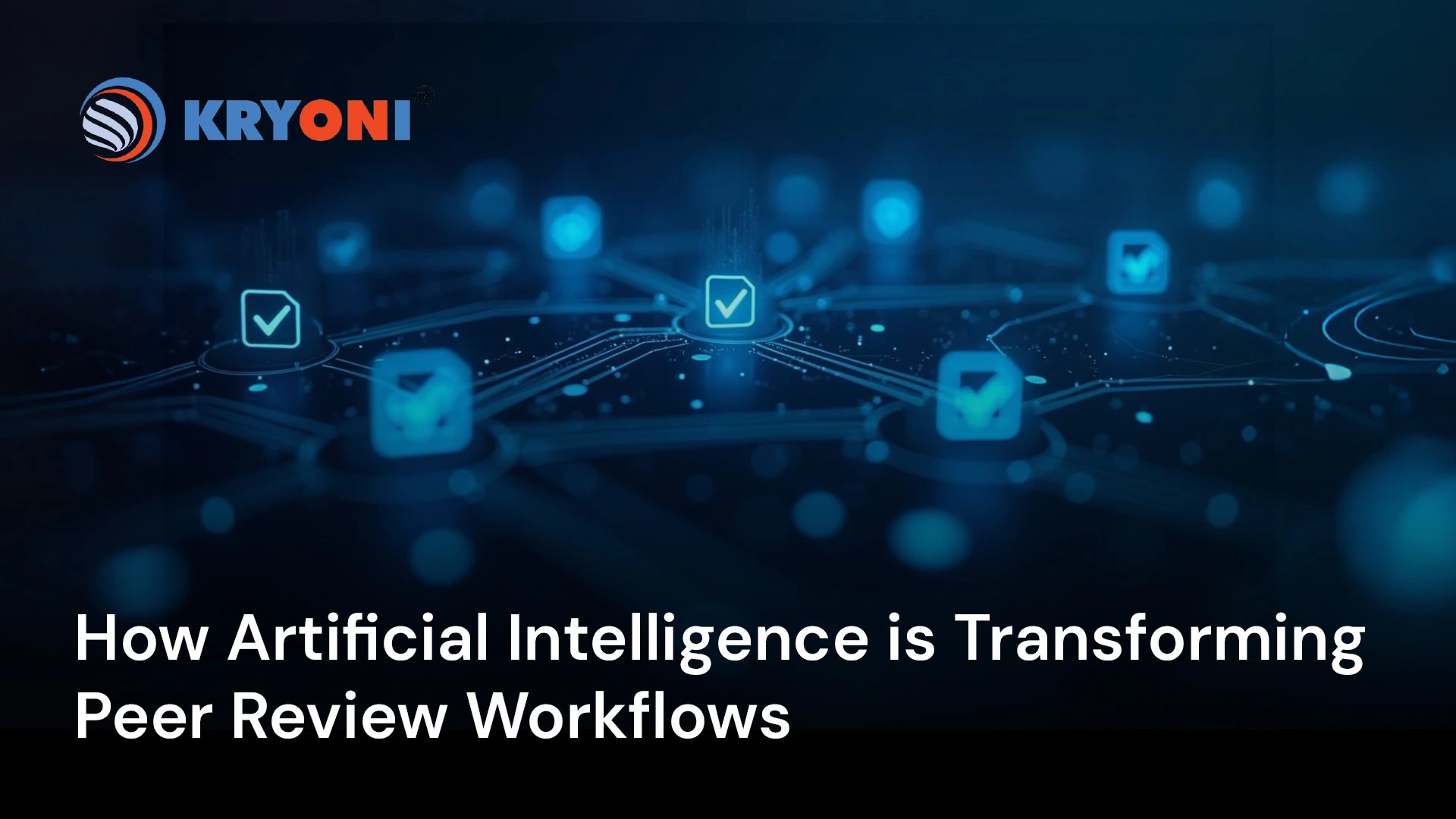
How Artificial Intelligence is Transforming Peer Review Workflows
18 Sep 2025
In the world of academic publishing, peer review is the gold standard for ensuring research quality, credibility, and integrity. Every manuscript submitted to a journal undergoes rigorous evaluation by experts in the field, a process that safeguards the accuracy of scientific knowledge. However, this process has traditionally been manual, time-consuming, and resource-intensive. Editors face a growing flood of submissions, reviewers are often overburdened, and maintaining consistency in evaluation is an ongoing challenge.
As the volume of academic research continues to rise exponentially, traditional peer review workflows are struggling to keep pace. Delays in reviews, mismatched reviewer assignments, and administrative bottlenecks not only slow down the dissemination of knowledge but also put pressure on authors and editorial teams alike.
This is where Artificial Intelligence (AI) steps in as a transformative force in peer review management. By automating routine tasks, intelligently matching reviewers to manuscripts, analyzing content for quality, and providing actionable insights, AI is revolutionizing the editorial workflow. Modern AI-powered peer review management software enables journals to streamline operations, reduce errors, enhance review quality, and improve overall efficiency, all while maintaining high academic standards.
In this blog, we will explore how AI is reshaping peer review workflows, from automated manuscript screening and intelligent reviewer matching to workflow analytics and enhanced editorial decision-making. We’ll also examine the benefits this brings to editors, authors, and reviewers, highlighting why AI is becoming an essential tool for modern academic publishing.
1. Automated Manuscript Screening: The First Step to Efficiency
One of the biggest bottlenecks in journal publishing is screening submissions for quality, originality, and compliance. AI significantly speeds up this process:
- Plagiarism Detection: AI compares submissions against billions of academic articles, preprints, and online sources to ensure originality and prevent research misconduct.
- Formatting and Compliance Checks: Automatically verifies adherence to citation styles, reference formats, headings, and journal-specific guidelines.
- Content Quality Alerts: Flags incomplete manuscripts, missing figures, or inconsistencies in tables and data.
Benefit: Editors can prioritize high-quality submissions immediately, accelerating the entire workflow.
2. Intelligent Reviewer Matching: Perfect Fit Every Time
Finding the right reviewer is critical. Assigning an unqualified reviewer can lead to biased or delayed reviews. AI solves this challenge with smart reviewer matching:
- Expertise Analysis: AI scans reviewer publications, past reviews, and keywords to ensure alignment with manuscript topics.
- Workload Optimization: Balances assignments to avoid overburdening reviewers.
- Bias Mitigation: Suggests a diverse reviewer pool to minimize conflicts of interest.
Benefit: Faster assignments, higher-quality reviews, and a fairer peer review process.
3. Enhancing Review Quality and Consistency
AI enhances reviewer accuracy and editorial consistency:
- Content Analysis: Detects methodological flaws, missing references, statistical anomalies, or duplicated data.
- Language and Tone Monitoring: Ensures reviews are constructive, professional, and standardized across reviewers.
- Preliminary Recommendations: AI can provide preliminary suggestions, helping editors make informed decisions faster.
Benefit: Reduces human errors, ensures fair evaluations, and maintains high editorial standards.
4. Streamlining the Entire Editorial Workflow
AI impacts every stage of peer review, from submission to final decision:
- Automated Notifications: Authors, reviewers, and editors are kept informed about deadlines and progress.
- Tracking and Analytics: Provides real-time status updates on each manuscript, highlighting bottlenecks.
- Workflow Optimization: Predictive insights help editors anticipate delays and take corrective actions before deadlines are missed.
Outcome: Journals can maintain a predictable, transparent, and faster publication cycle.
5. Data-Driven Insights: Smarter Decision-Making
AI-powered peer review software generates analytics that allow editors to:
- Evaluate reviewer performance and reliability.
- Identify recurring issues in submissions.
- Optimize reviewer assignment strategies for faster turnaround.
- Forecast publication timelines and reduce delays.
Example: Journals using AI dashboards reported a 25% reduction in review cycle time due to better reviewer allocation and workload balance.
Benefit: Editors gain actionable insights, making the peer review process more efficient and strategic.
6. Improved Experience for Authors and Reviewers
AI not only benefits editors but also enhances experiences for authors and reviewers:
- Authors: Receive quicker, more transparent decisions with clear feedback.
- Reviewers: Get recommendations aligned with expertise and manageable workloads.
- Editors: Can focus on strategic decisions and quality assurance instead of routine monitoring.
Outcome: Higher satisfaction across all stakeholders, contributing to the journal’s reputation and credibility.
7. Real-World Impact: Journals Already Benefiting from AI
- Faster Publication Times: Some journals have cut the average review cycle from 12 weeks to 6–7 weeks.
- Higher Quality Reviews: AI-assisted recommendations improve review accuracy and completeness.
- Better Resource Management: Editorial teams spend 50% less time on administrative tasks, allowing focus on strategy and content quality.
These examples demonstrate that AI is not just a tool for automation, but a strategic partner in modern academic publishing.
Conclusion: The Future of Peer Review is AI-Powered
Artificial Intelligence is revolutionizing peer review workflows by automating repetitive tasks, intelligently matching reviewers, maintaining consistency, and offering actionable insights.
With AI-powered peer review management software, journals can:
- Accelerate publication timelines
- Improve review quality and fairness
- Streamline editorial operations
- Enhance the experience for authors, reviewers, and editors
- Ensure data security and compliance
For academic publishers, AI is no longer a futuristic concept—it’s a practical, indispensable solution that ensures efficient, high-quality, and reliable peer review workflows.